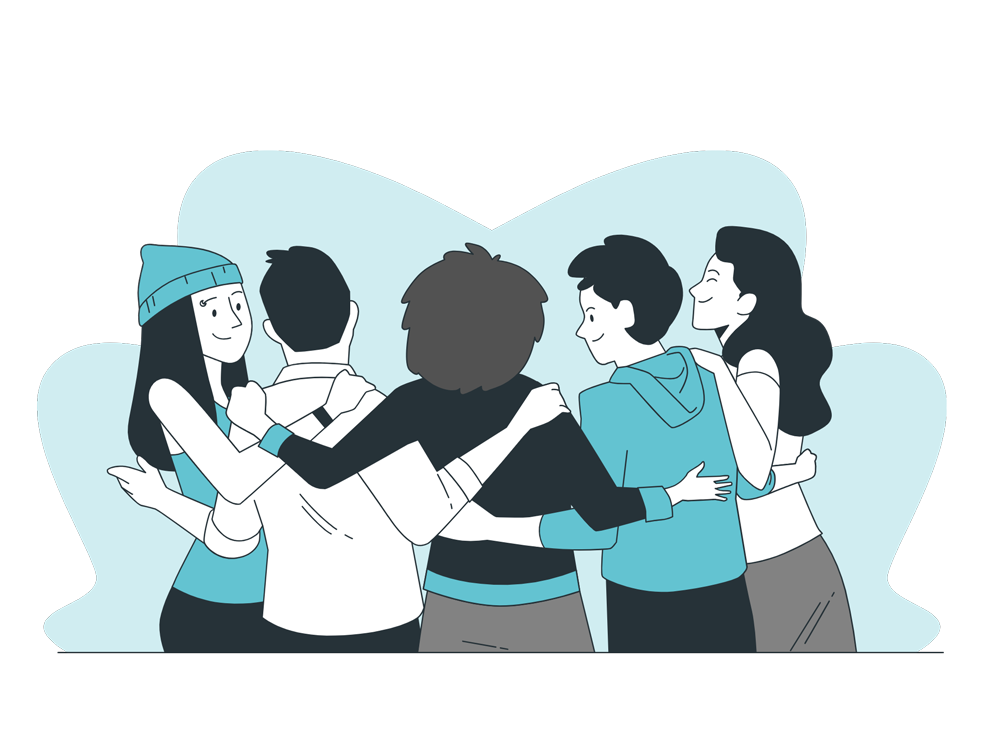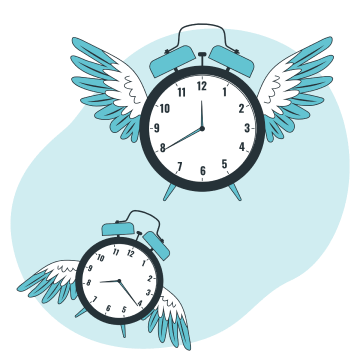Guidelines
User Interview
One-on-one with your user: uncover broad patterns and themes relating to people’s experiences & getting peoples’ “why” on your prototype and their user experience
Types of User Interviews
User interviews are in-depth interviews focusing on a topic of interest to the general research objectives.
There are different types regarding the openness of the conversation with the users – choose the right type of User Interview depending on your prior knowledge and the phase of User Research you are in:
- With low prior knowledge / when exploring a topic, start with unstructured interviews
- With some prior knowledge / when explaining issues you have identified you can do semi-structured interviews
- If you feel you know a lot about the topic and its meaning for your users/ you only want to validate hypothesis, go for structured interviews
Exploratory
Unstructured Interview:
- Guided only by the account of the user, starts with one very open question
- Level of prior experience needed: high
Exploratory or Explanatory
Semi-structured Interview:
- Guided by an interview guide, but no scripted questions (open-ended questions in improvised order)
- Level of prior experience needed: low-medium
Evaluative
Structured Interview:
- For interviewing a lot of people and easily compare responses
- Good to be combined with analytics when evaluating an existing product
- Level of prior experience needed: low
How are User Interviews Different from Other Methods?
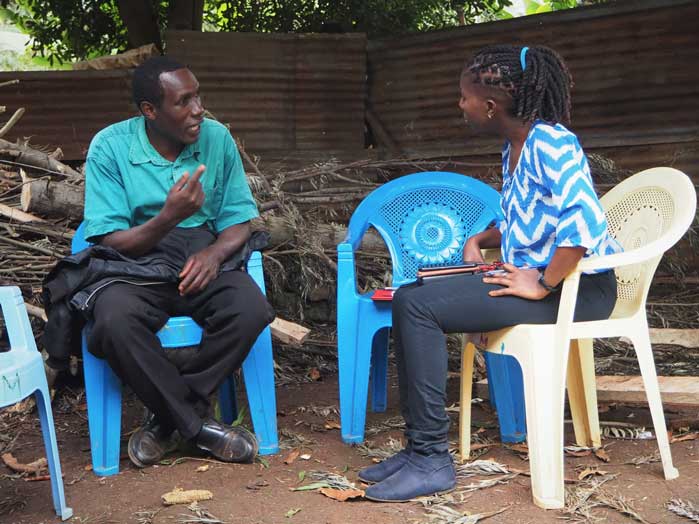
User Interviews
Understand users’ individual opinions, needs and practices
.
Research focus: Explore
To prepare:
Interview script or guideline
Schedule interview
Recording equipment
Data to be collected:
Individual answers
Beliefs and perceptions (attitudinal data)
Self-report on potential usage of service
Likes, dislikes, values
Danger of Bias:
Self-reporting bias: Cannot predict behavior! Watch out for group dynamics.
Hindsight Bias: Memories of the past can be filtered through present knowledge
Desirability Bias
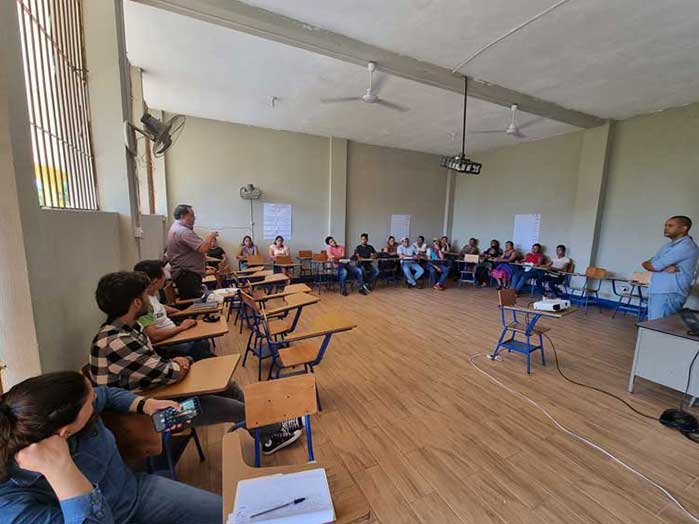
Focus Groups
Collect feedback on users’ general opinions and impressions, understand mental models and language
Research focus: Explore
To prepare:
Interview guideline
Recruit participants
Recording equipment
Data to be collected:
Group answers-
Social truths (attitudinal data)
Self-report on potential usage of service
Likes, dislikes, values
.
Danger of Bias:
Self-reporting bias: Cannot predict behavior! Watch out for group dynamics.
Hindsight Bias: Memories of the past can be filtered through present knowledge
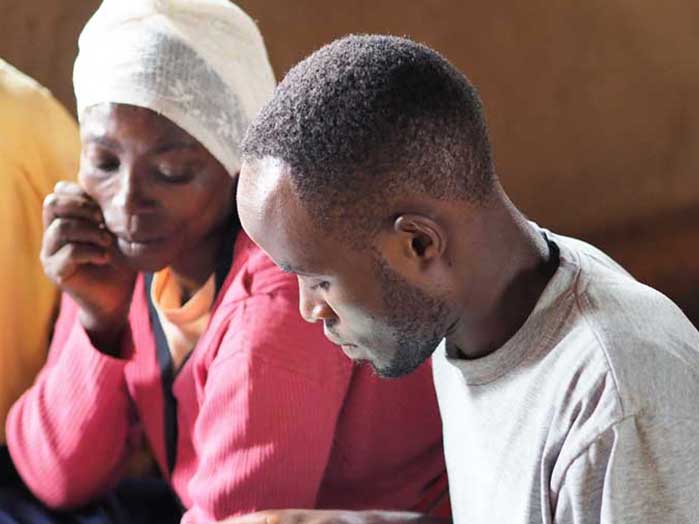
Usability Testing
Understand users’ individual opinions, needs and practices
.
Research focus: Evaluate (Prototype)
To prepare:
Product testing environment/ scenarioRecruit testers
Recording equipment
Data to be collected:
Observations on design and usability
(behavioral data)
Individual or group answers to follow up questions (attitudinal data)
Feedback on design
.
Danger of Bias:
Recency effect: your latest may not be your best insight
Hawthorne Effect: observers change the scene
Planning User Interviews
Things to keep in mind in preparing and implementing User Interviews:.
Data Collection
Set Research Objectives
- Define a realistic goal with your product stakeholders (“learning about users” is too vague!) to focus your questions.
- Based on these goals, formulate your questions.
Question Types in User Interviews
In theory, we all know that we should avoid leading questions. It takes quite some training though to really avoid them in the heat of the moment.
- Take some time to check your questions with a colleague
- Best is a mix of open ended and closed questions to keep your interviewee telling you his perspective but also not getting tired – he or she can relax a bit during closed questions, giving simple yes or no answers
Ask these types of questions
Avoid leading questions
Open question
Ask for how and why
Tell me about how you currently solve [problem].
Closed question
Ask for yes/no answers
Have you used any other tools in the past to solve [problem]?
Leading questions
Suggest a response
Why do you use Facebook so much?
A Qualitative Coding Approach
Interview Transcript
You work with your interview transcript and use your notes to guide you to interesting parts.
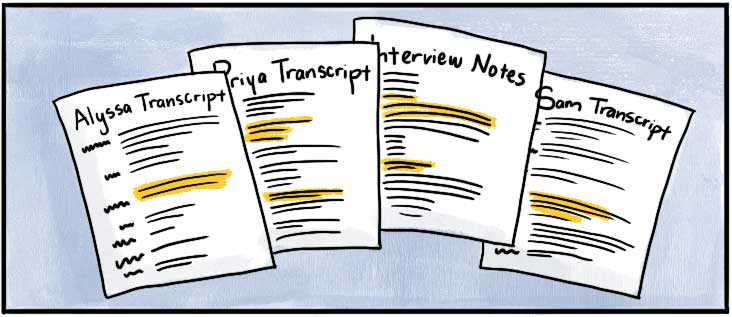
Source: Delve
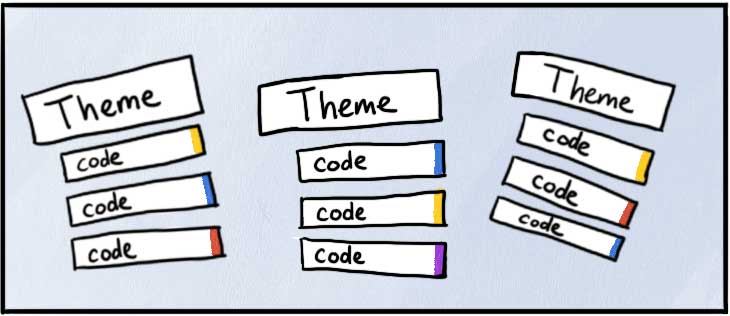
Source: Delve
Categorize notes
You can use Affinity Diagramming or Thematic Analysis to cluster statements in the transcript and observations from your notes into top-level categories first, then into sub-categories. Categories could be pain points, daily activities, or motivations. Check this video by NNGroup for an example.
Code notes
During coding, it is helpful to look for things related to Activities, Environments, Interactions, Objects and Users (see above on AEIOU), but what you are looking for will heavily depend on what you aim at with your field work. E.g. if observing to gather insights for a User Journey, or Experience Map, pay attention to interactions and objects.
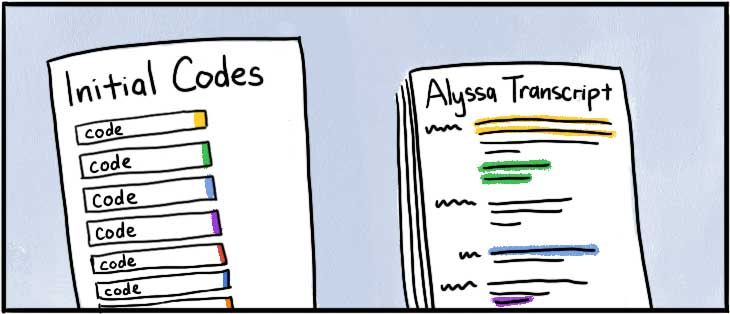
Source: Delve
AEIOU – things to be coded in interview transcripts
Activities
Image by Jeske van der Gevel
Environments
Image by Aline Weinsheimer
Interactions
Image by Karen Martinez
Objects
Image by Charlotte Schumann
Users
Image by Melissa Bonilla
Data Aggregation
After having gathered your observation and conversation notes, try to code them to understand the activities, thoughts and feelings your user go through when using your product or service.
How to use aggregated insights?
Your coded data from field observation can help you build:
User Personas
Create a profile of an idealized user containing quick notes on goals and motivations, needs, pain points etc.
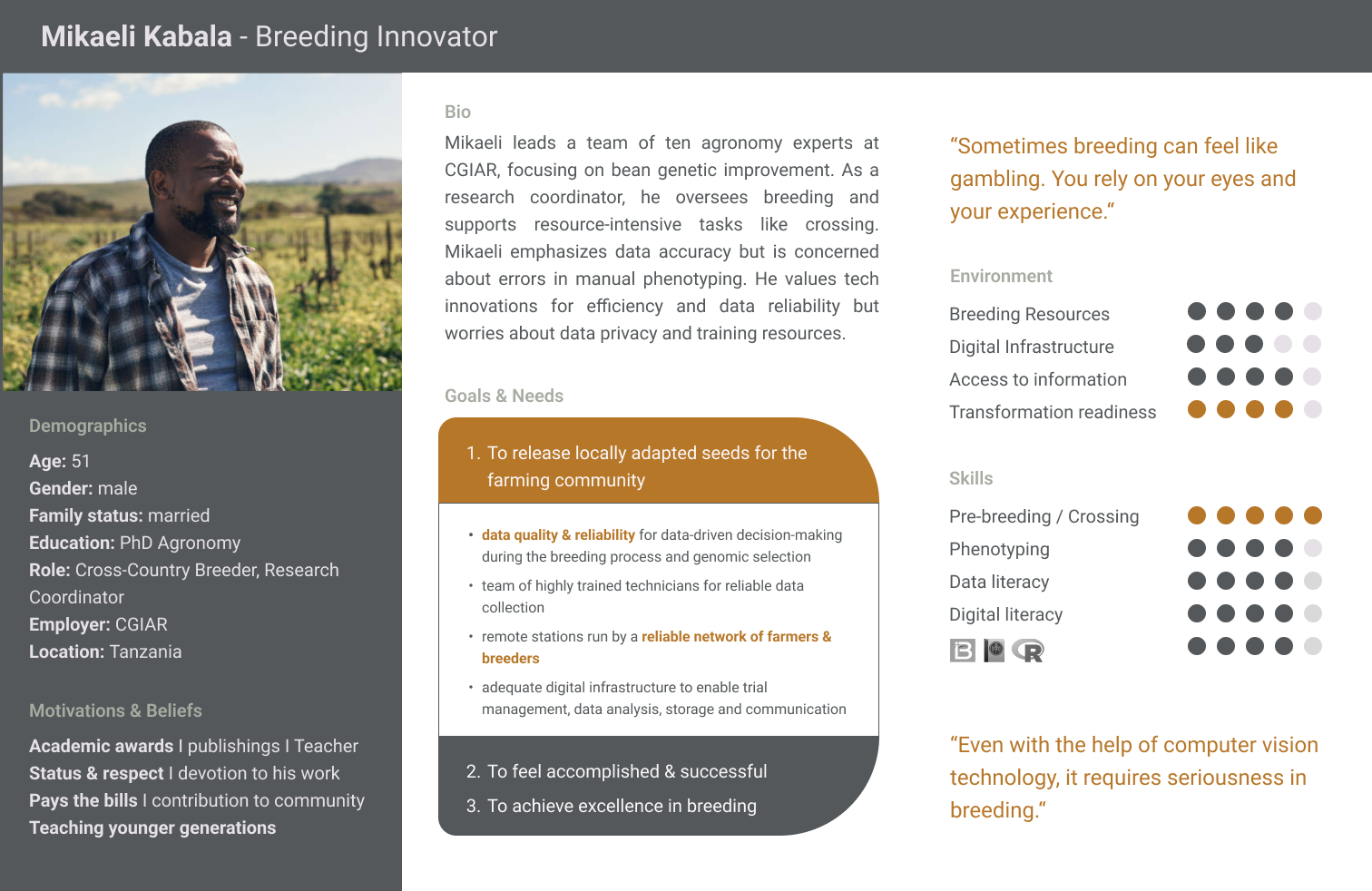
Source: Artemis, Digital Inclusion Initiative at the Alliance Bioversity and CIAT
Experience Maps
Use your insights to map how your future users currently solve the problem you are addressing with your innovation. Learn where to improve their experience.
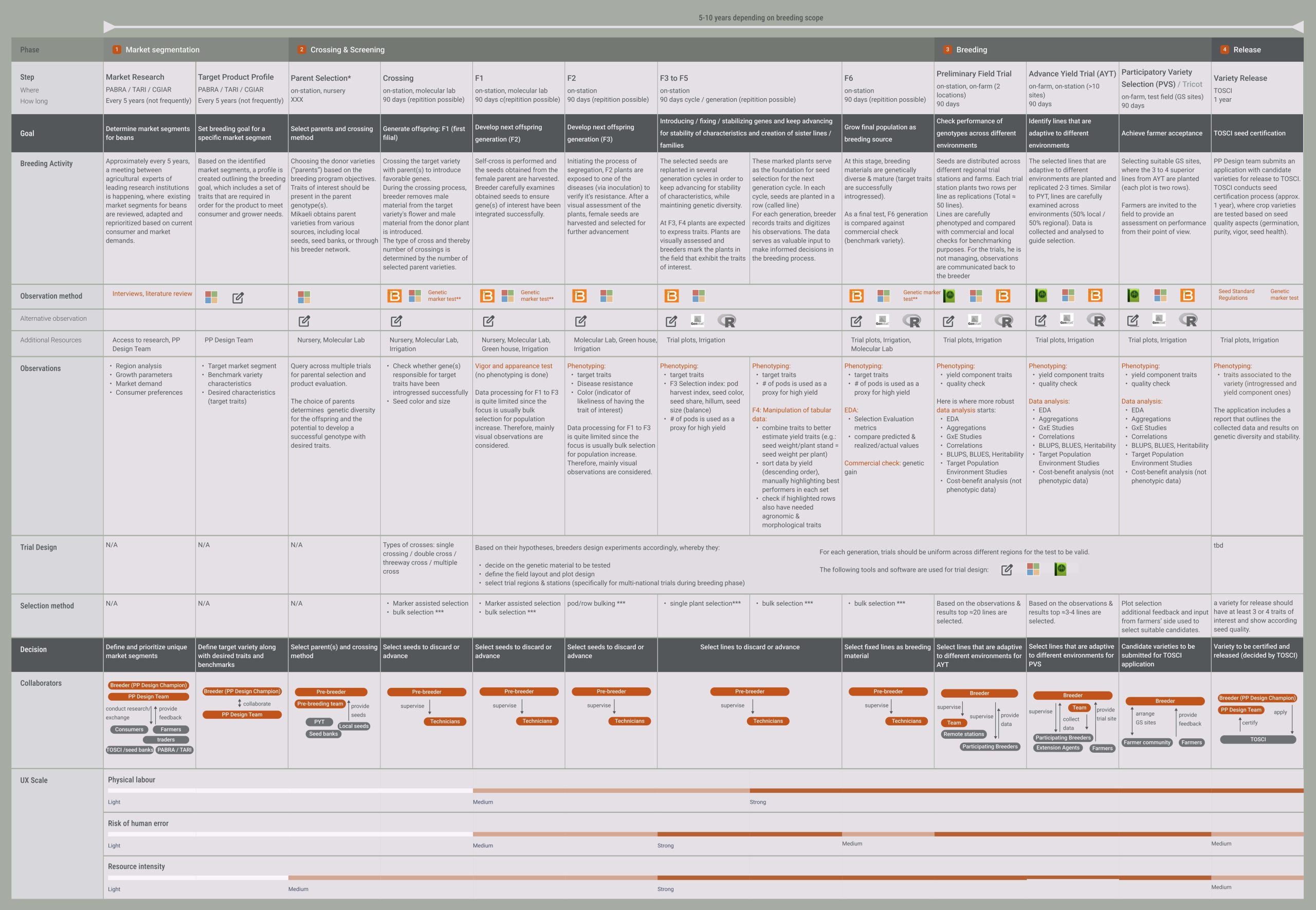
Source: Artemis, Digital Inclusion Initiative at the Alliance Bioversity and CIAT
User Journeys
Learn how your user perceives her or his journey throughout your product or service. What are his or her steps, feelings, touchpoints and pain points? How could you improve his journey for him or her?
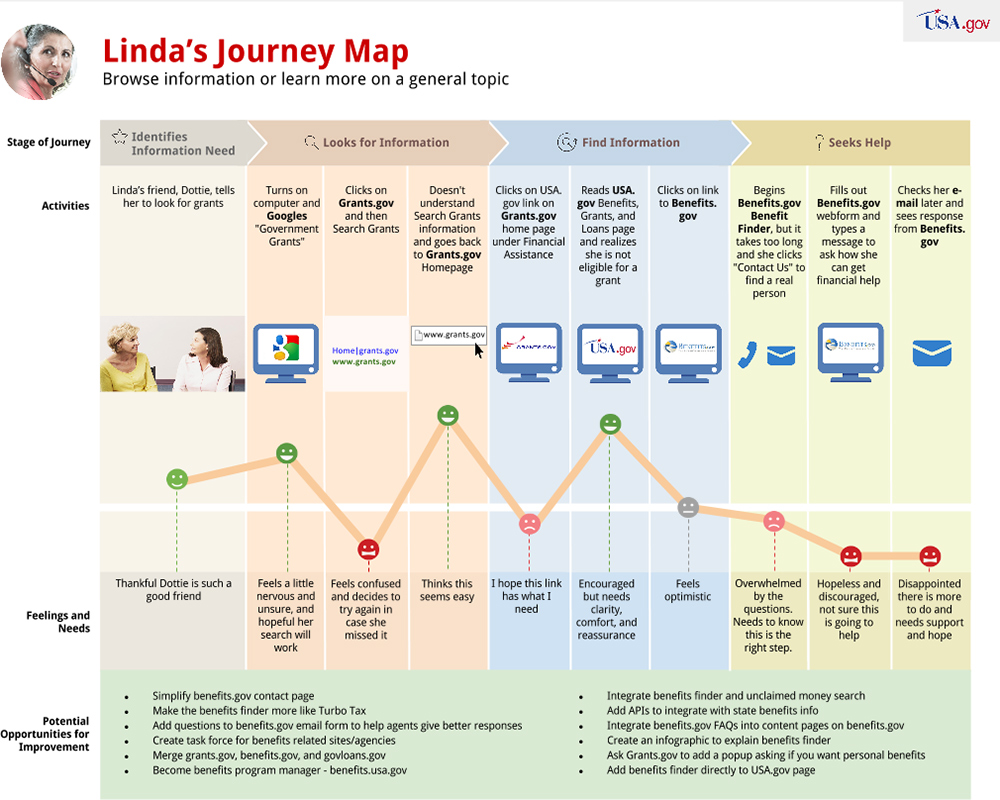
Source: NNGroup
Best Practices
Find here best practice examples with helpful tips and tricks.
Examples for User Interview Goals and Questions
Feasible Interview Goals
Identifying potential concerns or obstacles for usability of your product or service (e.g. after usability test)
Understanding competitors and potential market challenges
Outlining communication and involvement preferences
Possible Interview Questions
“Please tell me what you were thinking during the activities. Is there anything you did not understand or was particularly easy?”
“Tell me what you like about using [competitor product]. Is there something difficult? When do you use it? for which purpose? “
“Tell me about how you get information on [topic you are researching] currently. What do you like about it, what is difficult?”
Do’s and Don’ts
Do's
- Feedback your questions with the team, check that the answers will contribute to your goal
- Be prepared for follow up questions for different types of answers
- Ask one thing at a time (e.g. avoid "Do you use smartphone Apps and if yes, which?" And try "How often do you use your smartphone" and ask "What do you do with it?" as a follow up question)
- Always record your interviews
- If possible, always go to your users. In general, this helps them remembering processes and paints a more vivid picture. Bringing them to you might cause bias – e.g. people talking nicely about your product in your office. (While this holds generally true, it might be the opposite for specific groups that e.g. cannot speak as freely in their day-to-day environment).
- Create rapport – this might include a pre-interview call/meeting, explaining the reason for the interview and subsequent data use, letting users finish their thoughts instead of interrupting
Don’ts
- Avoid leading questions ("priming") and questions from which judgement would derive and could make people feel uncomfortable
- Avoid observers that might make the interviewee feel uncomfortable
Potential Bias To Be Aware Of
Find a detailed overview of potential biases with counter actions here.
Below a list of potential bias to be aware of when conducting User Interviews.
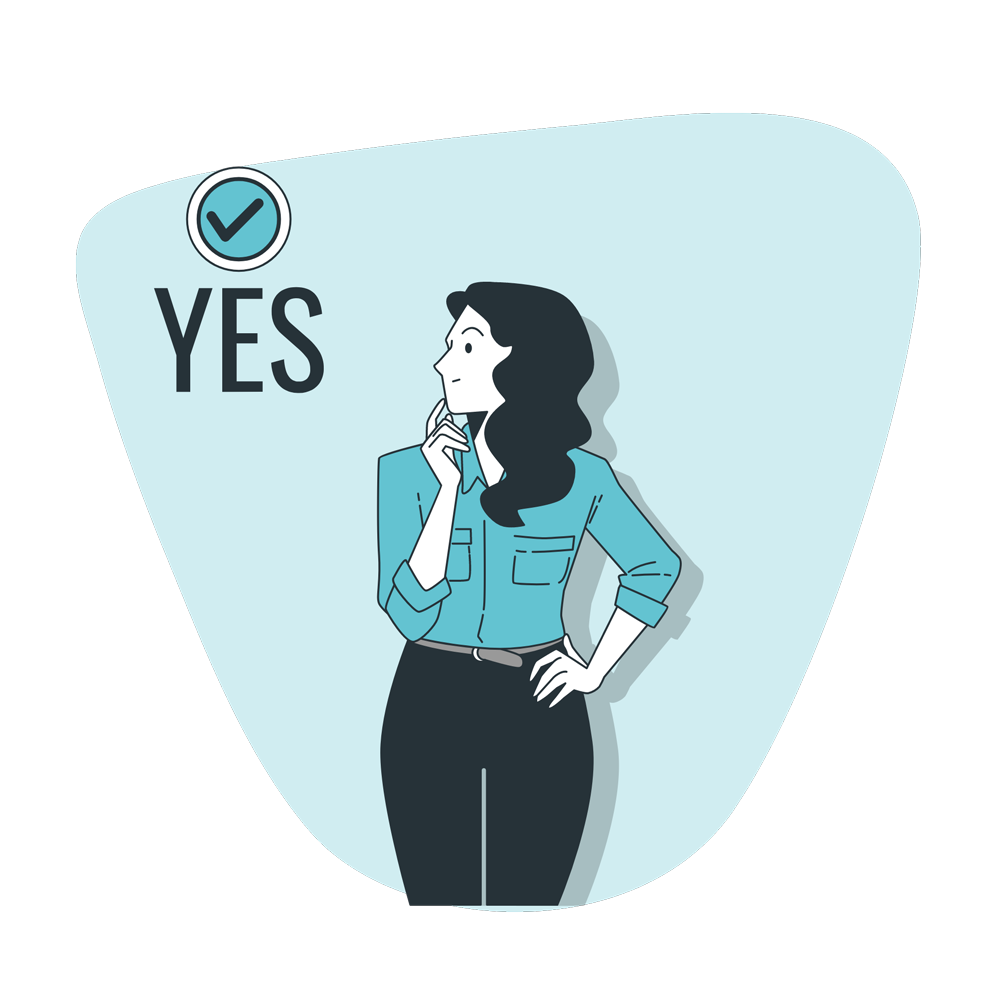
Confirmation Bias
People tend to give more weight to evidence that confirms their assumptions and to discount data and opinions that don’t support those assumptions.
False Consensus Bias
False consensus is the assumption that other people will think the same way as you. May lead to assuming own logic chains and preferences guide users as well.

People tend to make more “socially acceptable” decisions when they are around other people. Same holds true for interviews, people want to make you feel good and will answer what they think you find pleasant and acceptable.
The hindsight bias refers to people attempting to subconsciously filter memories of past events through the lens of present knowledge.
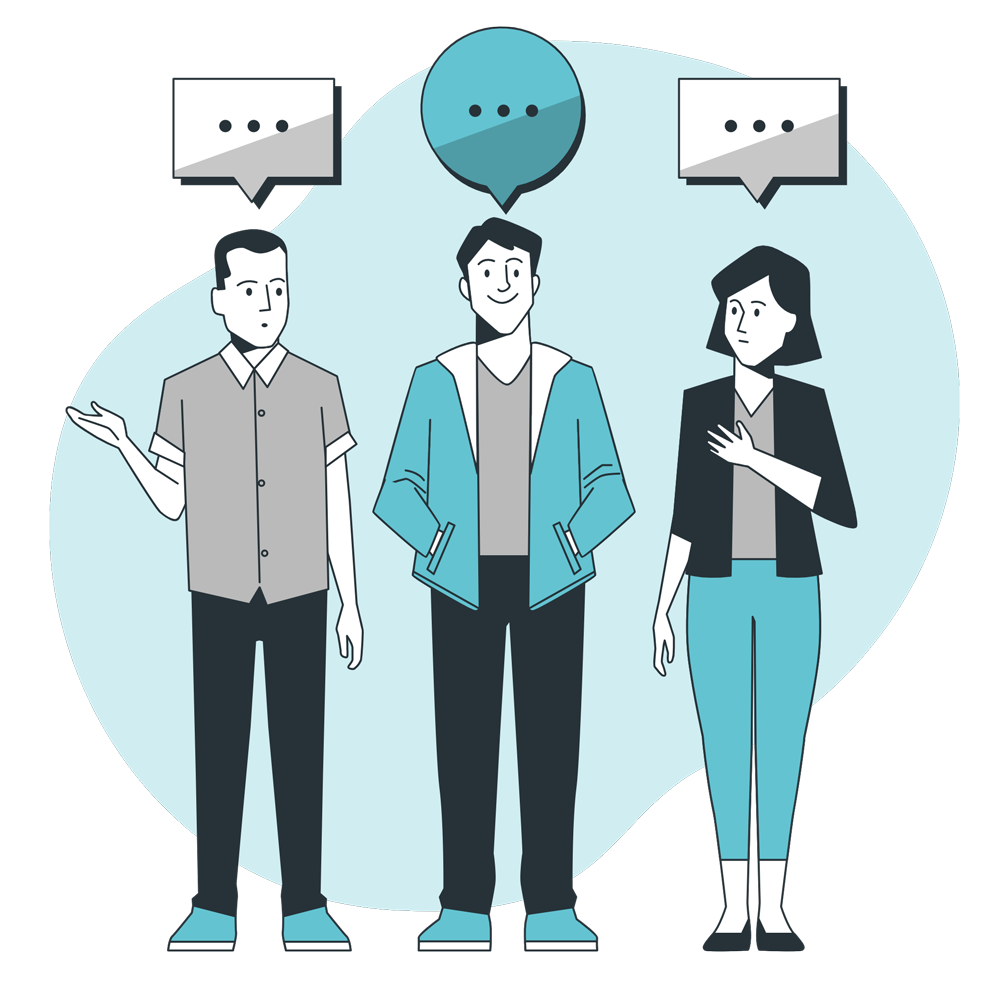
Implicit Bias / Stereotyping
We associate our attitudes and stereotypes to people without our conscious knowledge. Our observations and interpretations of data can be steered by that and produce biased results.
Reading Recommendation
3 Types of User Interviews by NNGroup
The best user research questions and how to ask them by Maze
Video on user interview preparation and attitude by MARS Start Up Toolkit
Overview on what, when and how to interview by Userinterviews

